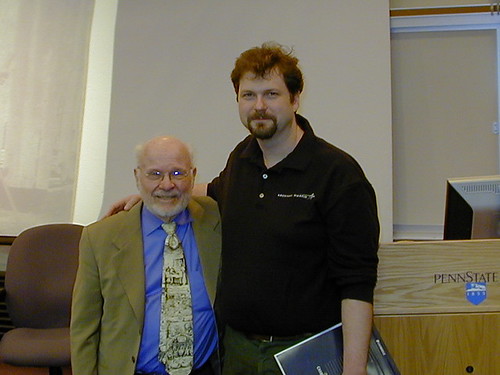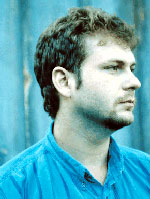The battle is coming to a head.
MAPPS versus the Federal Government on what the Brooks Act means, with regard to definitions of surveying and mapping, and to what extent federal contracting activities must be Qualifications-Based Selection (specifically meaning, with the implication the work will be performed under the responsible charge of a licensed professional).
For me, fortunately this is no problem, as not only am I a GIS practitioner in the Federal arena, I am also a Licensed Professional Land Surveyor and Licensed Professional Engineer. I can also say I know of quite a few firms doing GIS work, which have similarly licensed professionals on staff. However, I also know of quite a few firms which do not have licensed professionals on staff. In some instances, they have managed to skirt state laws and the Brooks Act by virtue of the work being generally unrelated to land surveying, however in instances such as topographic mapping, the lines become more blurred, and in the instance of cadastral mapping, quite often are crossed outright.

As such, AAG and others have teamed up to file an
Amicus Brief and are acting to stop this lawsuit.I can certainly understand the concern of the GIS practitioners and the organizations listed. However, many of the organizations represented only have a very limited number of members who actually do federal contracting. And of these members, many
do have licensed staff in-house. Those that don't, certainly could consider retaining licensed professionals as well, if so much is actually at stake. But I certainly don't agree with the "end of the world" characterizations that have been raised.
What I do, however, find disturbing is the marginalization of professional licensure during the course of this. Essentially,
statements have been made, that licensure doesn't really protect the public, or that licensure doesn't ensure perfection. No, it doesn't, and nobody ever claimed it did - in fact, licensure is the mark of
minimal competency to take responsible charge of a project. In essence, the starting point upon which a true professional is built.
It isn't perfect, and that is why we have investigations, enforcement, E&O insurance, and other safeguards and remedies in the professions - as opposed to the complete lack of similar infrastructure which exists in the unlicensed community.
Oddly, these same statements marginalizing licensure and professional status would also tend to undermine
GISCI and other efforts toward promoting professionalism in the unlicensed GIS community.
Further, it has been stated that it would be impossible to devise an examination to ensure the competency of GIS professionals as they do in Engineering and Land Surveying. Thoroughly untrue.
This demonstrates fundamental misunderstandings of professional licensure. Professional licensure is similar to a three-legged stool - the key elements are not
just an examination, but also educational requirements and experience requirements. No single one of these can ensure an adequate yardstick. The stool does not begin to have balance without all three.
And with regard to examinations, certainly not every aspect of engineering or land surveying is adequately covered by their respective examinations, either - the exams present a microcosm of the universe of each profession, intended to gauge basic breadth and depth of understanding. The same
most certainly can be done for GIS or Computer Science. I say this from experience, as one who straddles
all of these.
I do have mixed feelings on this entire lawsuit - I have concerns about Land Surveyors being thrust into new areas of practice beyond their familiarity, in which they are not competent to practice, and yet at the same time, see the need to curb some of what amounts to unlicensed practice in the GIS community, particularly with regard to cadastral and other issues.
Another issue is that state laws governing what does and doesn't constitute land surveying vary from state to state - and in many it is
not just boundary surveying. Certainly states do not intend to give up their sovereignty to Federal Government, so there is some interplay to be realized here as well.
Fortunately, I can cast stones in either direction, and do not have to pick sides... My only hope is that some clarity will emerge from all of this.
 In Pennsylvania, the position of County Surveyor was abolished decades ago. Elsewhere, some states do still have County Surveyors - yet where still in use, it has in some instances become politicized, or may have duties which are either murky, inconsistent from one place to another, or even a position without any duties. Many consider the position "antiquated".
In Pennsylvania, the position of County Surveyor was abolished decades ago. Elsewhere, some states do still have County Surveyors - yet where still in use, it has in some instances become politicized, or may have duties which are either murky, inconsistent from one place to another, or even a position without any duties. Many consider the position "antiquated". Here, the County Surveyor could be responsible for reviewing submitted plans, for working with other local surveyors toward getting surveyed parcels, subdivisions, rights-of-ways and so on tied to a consistent system of monumentation, via GPS and other means, and so on, tying deeds and land records data to GIS data - toward iteratively refining the cadastre toward providing ever-increasing degrees of accuracy and reliability. Similarly, the County Surveyor could work with his counterparts in adjoining counties collaboratively toward building and bolstering regional, and ultimately statewide partnerships such as PAMAP here in Pennsylvania, which was a collaborative effort toward leveraging investments for obtaining aerial imagery - similar approaches can be taken toward gathering a host of other core datasets and mapping, such as LIDAR data, hydrology, roads, utilities, buildings and structures, and so on.
Here, the County Surveyor could be responsible for reviewing submitted plans, for working with other local surveyors toward getting surveyed parcels, subdivisions, rights-of-ways and so on tied to a consistent system of monumentation, via GPS and other means, and so on, tying deeds and land records data to GIS data - toward iteratively refining the cadastre toward providing ever-increasing degrees of accuracy and reliability. Similarly, the County Surveyor could work with his counterparts in adjoining counties collaboratively toward building and bolstering regional, and ultimately statewide partnerships such as PAMAP here in Pennsylvania, which was a collaborative effort toward leveraging investments for obtaining aerial imagery - similar approaches can be taken toward gathering a host of other core datasets and mapping, such as LIDAR data, hydrology, roads, utilities, buildings and structures, and so on. The maxim in the surveying community of "GIS = Get It Surveyed" is still alive and well, where cadastral GIS is concerned.
The maxim in the surveying community of "GIS = Get It Surveyed" is still alive and well, where cadastral GIS is concerned. Finally back home, after spending a week on the road for a few meetings around the country, including the
Finally back home, after spending a week on the road for a few meetings around the country, including the  The sessions I attended:
The sessions I attended: If, on the other hand, it's not a representation of the cadastre, then perhaps it's in fact something which perhaps has no real meaning, merit or legal standing whatsoever.
If, on the other hand, it's not a representation of the cadastre, then perhaps it's in fact something which perhaps has no real meaning, merit or legal standing whatsoever. I haven't posted in a while, have been busy with a number of things, such as new projects kicking off, proposals to write, along with a number of meetings.
I haven't posted in a while, have been busy with a number of things, such as new projects kicking off, proposals to write, along with a number of meetings.






 As such, AAG and others have teamed up to file an
As such, AAG and others have teamed up to file an 






